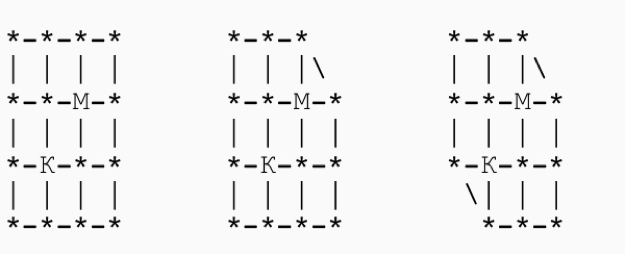Problems
In some country there are 101 cities, and some of them are connected by roads. However, every two cities are connected by exactly one path.
How many roads are there in this country?
Determine all integer solutions of the equation \(yk = x^2 + x\). Where \(k\) is an integer greater than \(1\).
Prove that for every natural number \(n > 1\) the equality: \[\lfloor n^{1 / 2}\rfloor + \lfloor n^{1/ 3}\rfloor + \dots + \lfloor n^{1 / n}\rfloor = \lfloor \log_{2}n\rfloor + \lfloor \log_{3}n\rfloor + \dots + \lfloor \log_{n}n\rfloor\] is satisfied.
\(a_1, a_2, a_3, \dots\) is an increasing sequence of natural numbers. It is known that \(a_{a_k} = 3k\) for any \(k\). Find a) \(a_{100}\); b) \(a_{2022}\).
Given an endless piece of chequered paper with a cell side equal to one. The distance between two cells is the length of the shortest path parallel to cell lines from one cell to the other (it is considered the path of the center of a rook). What is the smallest number of colors to paint the board (each cell is painted with one color), so that two cells, located at a distance of 6, are always painted with different colors?
\(f(x)\) is an increasing function defined on the interval \([0, 1]\). It is known that the range of its values belongs to the interval \([0, 1]\). Prove that, for any natural \(N\), the graph of the function can be covered by \(N\) rectangles whose sides are parallel to the coordinate axes so that the area of each is \(1/N^2\). (In a rectangle we include its interior points and the points of its boundary).
A group of numbers \(A_1, A_2, \dots , A_{100}\) is created by somehow re-arranging the numbers \(1, 2, \dots , 100\).
100 numbers are created as follows: \[B_1=A_1,\ B_2=A_1+A_2,\ B_3=A_1+A_2+A_3,\ \dots ,\ B_{100} = A_1+A_2+A_3\dots +A_{100}.\]
Prove that there will always be at least 11 different remainders when dividing the numbers \(B_1, B_2, \dots , B_{100}\) by 100.
There are 68 coins, and it is known that any two coins differ in weight. With 100 weighings on a two-scales balance without weights, find the heaviest and lightest coin.
a) Give an example of a positive number \(a\) such that \(\{a\} + \{1 / a\} = 1\).
b) Can such an \(a\) be a rational number?
A cat tries to catch a mouse in labyrinths A, B, and C. The cat walks first, beginning with the node marked with the letter “K”. Then the mouse (from the node “M”) moves, then again the cat moves, etc. From any node the cat and mouse go to any adjacent node. If at some point the cat and mouse are in the same node, then the cat eats the mouse.
Can the cat catch the mouse in each of the cases A, B, C?
